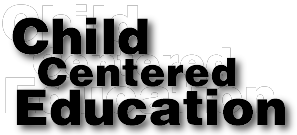A recent development has been to create magnet schools for gifted children. In Houston, Texas, a highly successful magnet school, River Oaks Elementary has offered exceptional opportunities for gifted children. River Oaks has created an atmosphere of increased learning for motivated, dedicated, and highly-intellectual students. The magnet school depends heavily on consistent testing and assessment of students to better analyze their progress and achievement. In creating a specialized school for gifted children, the school district has allowed students to learn, work, and succeed in a school designed to foster exceptional talents and creativity.
Other Innovative Programs for Gifted and Talented Youth
Many colleges and universities offer private summer and weekend session programs to help gifted children develop their intellectual and creative skills in a more conducive environment. The Center for Talented Youth is among the most popular summer camps for highly intelligent students. Their program selects sixth, seventh, and eighth graders who perform well on the SAT to attend. Public schools, as well, have developed many extra-curricular and summer programs designed to engage gifted youth.
A major source of intellectual stimulation for gifted students lies in competition (Winner, 1996). Various local and national organizations have sponsored competitions for exceptional students in the areas of history, math, spelling, and science. A particularly innovative competition held nationally is the Odyssey of the Mind. The Odyssey is designed to encourage creative youth to apply their talents to solving a problem. By using a complex process of identifying a problem, brainstorming solutions, and working together as a team, gifted children use all of their intellectual and creative talents to produce real solutions to real problems. These types of competitions encourage gifted children to employ their talents and to be proud of their intelligence.
Gifted and talented children learn at an increased rate than their age-mates and must be taught accordingly. Public schools and private foundations are currently developing strategies to help nurture exceptional abilities. Public school's attempts at incorporating individualized education programs for gifted students are supported by the National Association for Gifted Children, a non-profit organization devoted to exploring and discussing issues associated with the education of gifted children. The strengths of gifted programs lay in their use of child-centered techniques. Smaller classes, continual assessment, curriculum based on the needs of the students and creative approaches to learning are all important aspects of gifted programs. Our educational system is devoted to making the most of our children's abilities and fostering the most intelligent and creative adults possible. Without the constant challenge specialized programs offer gifted youths, many of our brightest children may not live up to their full capacity.
Government 375: Educational Reform and Ideology

